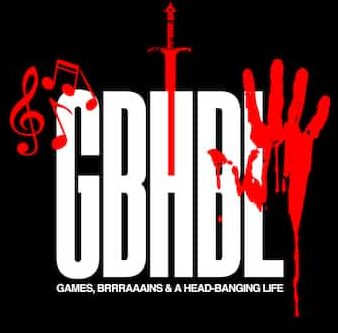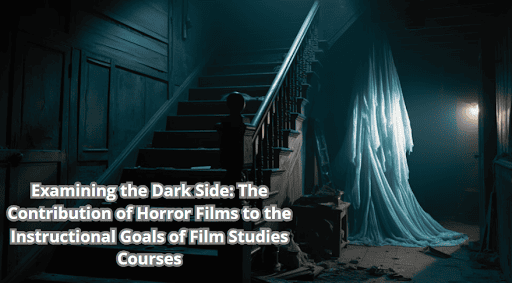Exploring the Dark Side: The Educational Value of Horror Movies in Film Studies Curricula
Horror movies, often relegated to the realm of entertainment and occasional shock value, have long been a significant part of film history and culture. Their impact on audiences and their reflection of societal fears make them a rich subject for academic exploration.
Grasping the subtle nuances and historical underpinnings of this genre is no simple task, as it requires a discerning eye and analytical thinking. An online service that offers coursework help with any subject, including film studies, can be an invaluable resource for college students seeking assistance in understanding the depth and complexities of the horror genre.
In this post, we delve into the dark corridors of horror cinema and unearth the educational treasure that lies within, advocating for their inclusion in Film Studies curricula.
The Historical Lens: A Reflection of Societal Fears
Horror movies serve as a dark mirror, reflecting the anxieties and fears of the time in which they are made. For instance, the nuclear horrors of the ’50s gave birth to creature features like “Godzilla” and “Them!”, while the ’70s tapped into social dislocation with movies like “The Texas Chainsaw Massacre.” Through horror, students can engage with historical contexts in a visceral, emotional way, which traditional textbooks might not always capture.
Key Historical Periods in Horror Cinema:
- Pre-1950s: Universal Monsters and the birth of iconic characters.
- 1950s: Atomic Age anxieties and extraterrestrial invaders.
- 1960s-1970s: Social upheaval, the Vietnam War, and the emergence of slasher films.
- 1980s-1990s: Consumption, excess, and the rise of body horror.
- 2000s-Present: Post-9/11 fears, technology, and the reemergence of psychological horror.
The Art of Cinematography and Sound Design
Horror films are often at the forefront of innovative cinematography and sound design. The use of shadow and light in Nosferatu (1922), the unsettling angles in Hitchcock’s “Psycho” (1960), and the immersive soundscapes of “The Blair Witch Project” (1999) and “A Quiet Place” (2018) are prime examples of how horror pushes the boundaries of film-making techniques.
Elements of Study:
- Lighting: The interplay between light and shadow to create suspense.
- Camera Work: The use of angles, POV shots, and movement to evoke fear.
- Sound: Utilization of silence, soundscapes, and music to enhance mood.
Psychological Impact and Viewer Engagement
Horror films provide a safe space to explore extreme emotions. They engage viewers on a deep psychological level, often leading to discussions on why we seek out fear and what it says about human nature. The psychological draw of horror can be a springboard into studies of psychology, mythology, and philosophy.
Discussion Points:
- Fear as entertainment: Why are we drawn to horror?
- Catharsis theory: Does horror provide a “safe” scare?
- Horror and the “Other”: What does the portrayal of monsters and villains say about societal outsiders?
The Role of Gender and Sexuality
The horror genre has been both criticized and celebrated for its treatment of gender and sexuality. The “final girl” trope, the sexualization of horror, and the exploration of body horror offer rich texts for analysis. Through horror, students can dissect how film reflects and shapes societal attitudes towards gender roles and sexual identity.
Topics for In-Depth Analysis:
- The evolution of the “final girl” and what she represents.
- Gendered violence in horror and its implications.
- The intersection of horror and sexuality.
Censorship and the Horror Genre
Horror films often push the boundaries of what is considered acceptable, resulting in a history fraught with censorship. Studying these films within the context of what was censored, when, and why, offers insight into societal norms and the ever-evolving standards of taste and decency.
Censorship Case Studies:
- The British “Video Nasty” list of the 1980s.
- The MPAA ratings battles over films like “Saw” and “Hostel.”
- International censorship and cultural differences.
List of Must-Watch Horror Films for Students
In order to delve deeper into the mechanics and thematic elements of the horror genre, explore a curated selection of films that showcase the diversity and evolution of horror storytelling.
Below is a detailed table featuring key horror films that have left an indelible mark on the genre and are essential viewing for any film studies curriculum.
| Film Title | Year | Director | Subgenre | Key Themes | Cinematic Techniques | Notes/Comments |
|---|---|---|---|---|---|---|
| Nosferatu | 1922 | F.W. Murnau | Supernatural | Fear of the unknown, disease | Use of shadow, silent film techniques | The eerie atmosphere created without sound is profound |
| Psycho | 1960 | Alfred Hitchcock | Psychological Thriller | Madness, maternal ties | Unsettling angles, sharp editing | Shower scene is a study in building tension |
| The Texas Chainsaw Massacre | 1974 | Tobe Hooper | Slasher | Isolation, family dysfunction | Gritty realism, low-budget aesthetic | Intense use of sound and minimalistic score |
| A Nightmare on Elm Street | 1984 | Wes Craven | Supernatural/Slasher | Dreams vs. reality, adolescence | Visual effects, innovative sound design | Blurs the line between dream and waking states |
| Ringu (The Ring) | 1998 | Hideo Nakata | Supernatural/Psychological | Technology, curse | Minimalist style, suspense over shocks | The use of VHS tape as a plot device is unique |
| The Blair Witch Project | 1999 | Daniel Myrick, Eduardo Sánchez | Found Footage | Isolation, the power of belief | Handheld camera work, realistic documentary style | Pioneered the found-footage subgenre in the modern era |
| The Shining | 1980 | Stanley Kubrick | Psychological Horror | Madness, isolation | Steadicam usage, symmetrical framing | Known for its ambiguous narrative and chilling performances |
| Get Out | 2017 | Jordan Peele | Social Thriller | Racism, identity | Foreshadowing, use of symbolism | Offers social commentary wrapped in horror |
| It Follows | 2014 | David Robert Mitchell | Supernatural/Thriller | Sexuality, inevitability of death | Unique soundtrack, wide shots | It uses the horror genre to explore deeper social themes |
| The Babadook | 2014 | Jennifer Kent | Psychological Horror | Grief, motherhood | Dark visuals, minimal special effects | Horror as a metaphor for mental illness |
| Pan’s Labyrinth | 2006 | Guillermo del Toro | Fantasy Horror | Fascism, innocence | Elaborate set design, practical effects | Blends historical narrative with dark fantasy |
| Saw | 2004 | James Wan | Psychological Thriller | Morality, survival | Quick editing, gruesome practical effects | Introduced a new level of graphic spectacle to horror |
| Hereditary | 2018 | Ari Aster | Supernatural/Psychological | Grief, family legacy | Use of miniatures, unsettling imagery | Explores the horror of inherited trauma |
| Alien | 1979 | Ridley Scott | Sci-Fi Horror | Isolation, the unknown | Atmospheric tension, creature design | Blends science fiction with horror to chilling effect |
| The Witch | 2015 | Robert Eggers | Historical Horror | Religion, paranoia | Natural lighting, period-authentic dialogue | A disturbing take on Puritanical fear and folklore |
Conclusion
The educational value of horror movies in Film Studies curricula is substantial. Through the examination of historical context, artistry, psychological engagement, societal themes, and the issues of censorship, students can gain a well-rounded understanding of both cinema and cultural studies.
Horror films challenge viewers, offer alternative perspectives, and provoke thoughtful analysis, making them a potent resource in the landscape of film education. By embracing the dark side of cinema, educators can illuminate the minds of students, offering lessons that extend far beyond the screen and into the very core of human experience and societal reflection.




